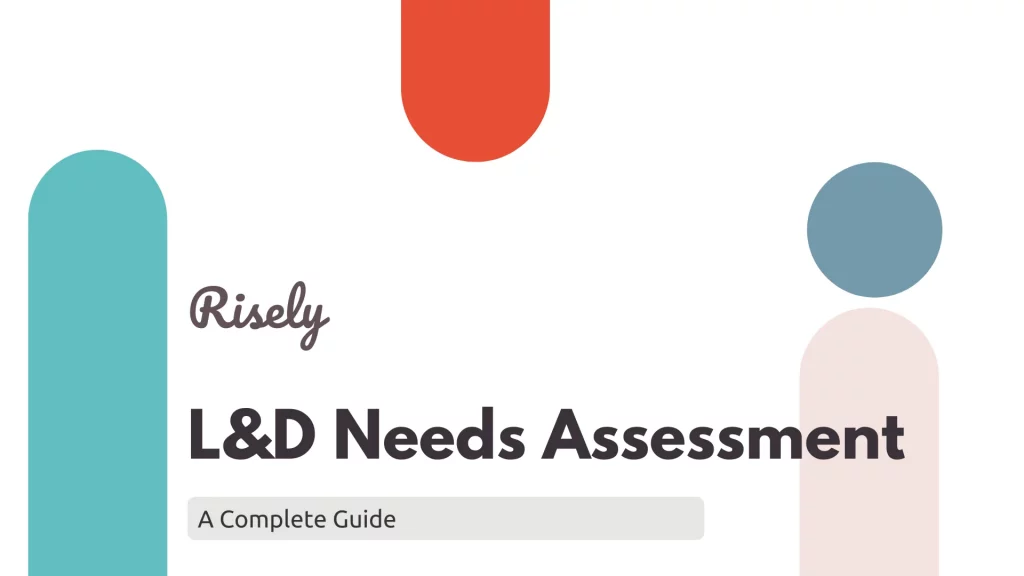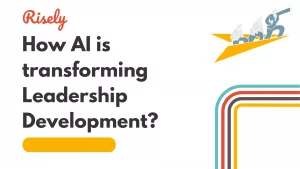Learning and Development Needs Assessment 101
A training needs assessment, or TNA, helps organizations find skills gaps and create specific training programs. When training initiatives match organizational goals, it encourages a culture of learning, increases employee engagement, and helps you reach important goals. This blog post is a guide to understand everything that you need to know about learning and development needs assessments and carry them out successfully for your organization.What is a Needs Assessment?
A Learning and Development (L&D) needs assessment is a process that helps you find out what training your employees need. It looks deeper than just spotting skills gaps, as it adopts a more holistic and long-term approach to developing the talent of your organization. In very simple terms,- Skills Gap Analysis = Checking what tools are missing from a toolbox.
- L&D Needs Assessment = Planning how to build a world-class workshop.
- Employee aspirations
- Career path planning
- Organizational culture
- Future strategic objectives
Why does a needs assessment matter?
When companies view training as an important tool instead of a quick fix, they can address new skill gaps early. This approach helps employees perform better and fosters innovation. It makes sure workers gain the skills needed for personal and company success. It also helps you stay competitive. By matching training efforts with business goals, you can make sure that their L&D investments lead to real benefits. This involves clearly stating the goals of the training and designing the training programs around those goals. Further reading: What Does A Learning And Development Team (L&D) Do?Other Interesting Reads
Conducting a Learning and Development Needs Analysis
A successful L&D needs assessment is based on important parts that work together. It should start by finding out who the training is for. This means looking at job roles, departments, career paths, and personal goals.#1 Identifying Target Skills and Knowledge Gaps
Once we know who the target audience is, the next step is to find the specific skills they lack. This means looking at the skills needed for each job and comparing them to what the employees currently have. A good training program has to cover both hard skills and soft skills. Soft skills, like communication, teamwork, and problem-solving, are just as important in today’s team-oriented workplace. By finding and fixing gaps in both hard and soft skills, you build a workforce that is ready to handle tough problems.
#2 Analyzing Organizational Goals vs. Employee Competencies
Bridging the gap between what a company wants to achieve and what its employees can do is key to a good Learning and Development (L&D) plan. First, take the big organizational goals and break them down into clear and measurable targets. These targets can then be shared with different departments and roles. Next, doing a thorough job analysis is important. This means looking at the main tasks, duties, and skills needed for each job. When individual skills match the company goals, you can create a clear plan for employee growth that helps the company succeed. Performance reviews are also important in this process. They give useful feedback on how each employee is doing and point out where they might need to grow their skills. By using this performance data in the L&D needs assessment, you have to design training that focuses on fixing specific performance gaps.#3 Methods for Conducting L&D Needs Assessments
There isn’t a single best way to do L&D needs assessments. The most successful assessments use different methods that fit the specific needs and situation of the organization. It’s important to pick methods that match the organizational culture, budget, and goals. Each method has its own pros and cons. Choosing the best methods or a mix of them helps create a thorough needs assessment. Some common methods of conducting a needs assessment for L& D that you can look into are:- Surveys and Questionnaires: Surveys and questionnaires are useful tools for gathering data from many people. They help you understand the training needs of employees by collecting information from a wide range of views.
- Interviews; Surveys give a broad picture, but individual interviews and focus groups dig deeper. They provide detailed insights into specific training needs. These methods allow for open-ended questions, letting participants share their experiences, views, and suggestions.
- Focus Groups: Focus groups work well when you are looking into complex topics or getting different viewpoints from a small, chosen group of employees. Skilled facilitators guide the talks, making sure everyone can join in.
- Observation: Watching employees at work gives helpful real-time information about how they perform and use their skills. This way to assess is great for looking at hands-on skills. It also helps spot any gaps between what people know and what they can do.
- Performance reviews: Performance reviews and data from performance management systems are great for finding learning and development (L&D) needs. By looking at performance trends, strengths and weaknesses, and employee feedback, you can see where focused training could have a real effect.
#4 Integrating L&D Needs Assessment into L&D Strategies
The insights gained from a complete needs assessment are very helpful. But, in order to lead to results, they should be part of the organization’s L&D strategy. This means using the data to guide how training programs are designed, created, and delivered. Also, combining these insights makes training a regular part of the employee experience. This helps create a culture of ongoing learning and growth. There are multiple points where you need to think of integrations across L&D processes:Aligning L&D Assessment Results with Business Goals
This helps show how valuable training programs are. It focuses on going beyond just offering training. It measures how the training helps meet important goals. This process starts by clearly stating the goals we want to achieve. For instance, if improving customer satisfaction is a major goal, then L&D programs should work on boosting customer service skills. They should also give employees the tools and knowledge needed to create great customer experiences.Customizing Learning Pathways Based on Assessment Results
Today, training programs are not the same for everyone. Employees want learning that is special to their needs and goals. L&D needs assessments give us the information we need to make personalized learning paths for all employees. By using the data from these assessments, companies can change training content, delivery methods, and speed to match how each employee learns best. For example, some people do well with online learning they can do on their own, while others like training with a teacher or hands-on workshops. Of course, new advancements like AI can lend a helping hand in this process.#5 Gathering Stakeholder Support
People matter! Unsurprisingly, their support is vital in ensuring that your needs assessment leads to tangible results. People may resist this process for different reasons. These could include not understanding why it matters, being afraid of extra work, or worrying about what the results might mean. You need to have a strong change management plan that takes care of stakeholder worries ahead of time. Begin by clearly explaining the goals of the needs assessment. Highlight how it will positively affect employee performance and help the organization succeed. Involve stakeholders in creating and carrying out the plan. This can help them feel more invested and lessen their resistance.#6 Don’t Forget to Measure Impact & Improve!
Measuring how well an L&D needs assessment works is very important. It shows its value and helps you get support for training initiatives. Just doing the assessment and creating training programs is not enough. You must keep track of their progress and see what they gain from their L&D investments. To do this, they need to set clear success metrics, collect data on training results, and analyze how well the training has filled the skills gaps identified at first. Regular checks make sure that L&D programs stay effective and meet the changing needs of the organization. We talk more about ROI in our detailed blog that you can explore here: Using ROI of Training to Lead Successful L&D Interventions An L&D needs assessment should not just happen once. Look at it as part of a loop that keeps improving. You should collect feedback at different times—before, during, and after training—to find ways to make things better. Check the training feedback to see where the content was not effective, the delivery could be better, or the program time was too short. Use this feedback to adjust future training initiatives based on data. This way, you can always aim to improve the quality and results of L&D programs. Following this ongoing process helps keep the training programs relevant, interesting, and in line with the changing needs of the organization.Wrapping up
In conclusion, doing a Learning and Development Needs Assessment is very important. It helps align organizational goals with what employees can do. By finding out specific skills and knowledge gaps, companies can create learning paths that support their plans and help their business succeed. Using tools like surveys, interviews, and AI analytics makes the assessment easier. This leads to better performance and returns on investment. It is also important to tackle challenges like resistance from stakeholders and issues with data accuracy. This is key for effective assessments. Regular evaluation and feedback help improve L&D strategies over time. By embracing needs assessments, you can build a culture of learning and growth in your organization.Deeksha, with a solid educational background in human resources, bridges the gap between your goals and you with valuable insights and strategies within leadership development. Her unique perspectives, powered by voracious reading, lead to thoughtful pieces that tie conventional know-how and innovative approaches together to enable success for management professionals.
Bring your training to life with accurate training needs analysis.
Download Risely’s free training needs template today to kickstart effective and precise L&D systems with your team.
How to Build a Leadership Journey? ft. Thomas Ulbrich
Effective leadership doesn’t always begin with a grand vision. Sometimes, it takes root in the courage to take the first…
AI and Leadership Development: Driving Synergy for Growth
Sneha MishraApr 14, 2025
AI and Leadership Development: Driving Synergy for Growth You know the frustration all too well. Your organization invests thousands in…
How Are AI Learning Platforms Transforming Leadership Development?
Sneha MishraApr 8, 2025
As an L&D leader, you’re likely familiar with this frustrating reality: 82% of organizations consider leadership development critical(1), yet only…
5 Essential AI Skills for L&D Leaders
Sneha MishraMar 31, 2025
5 Essential AI Skills for L&D Leaders According to LinkedIn’s 2025 Workplace Learning Report(1), 71% of L&D professionals are now…
How to Create a Course with AI: A Guide for L&D Professionals
Sneha MishraMar 20, 2025
How to Create a Course with AI: A Guide for L&D Professionals According to a McKinsey survey(1), only 11% of…







